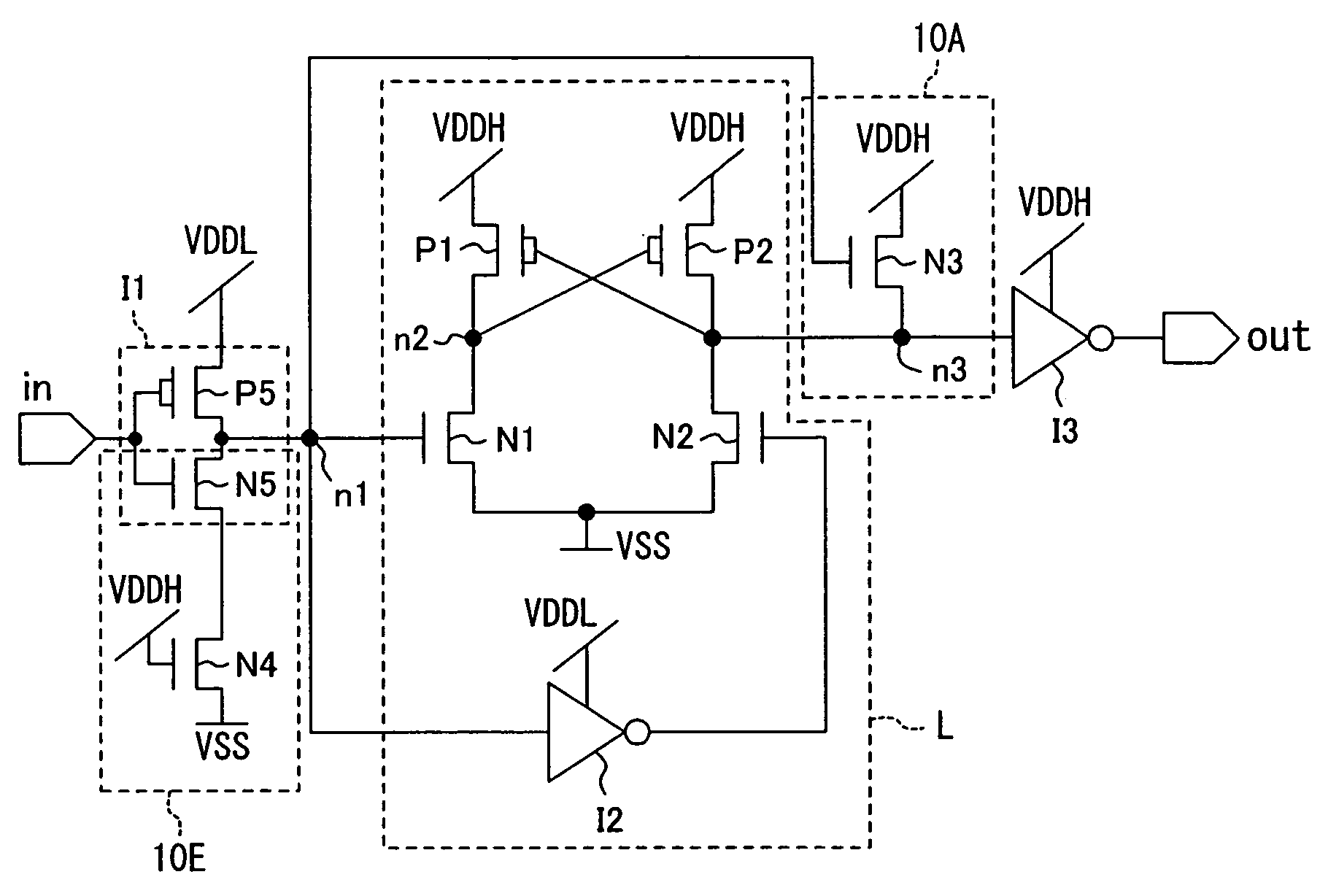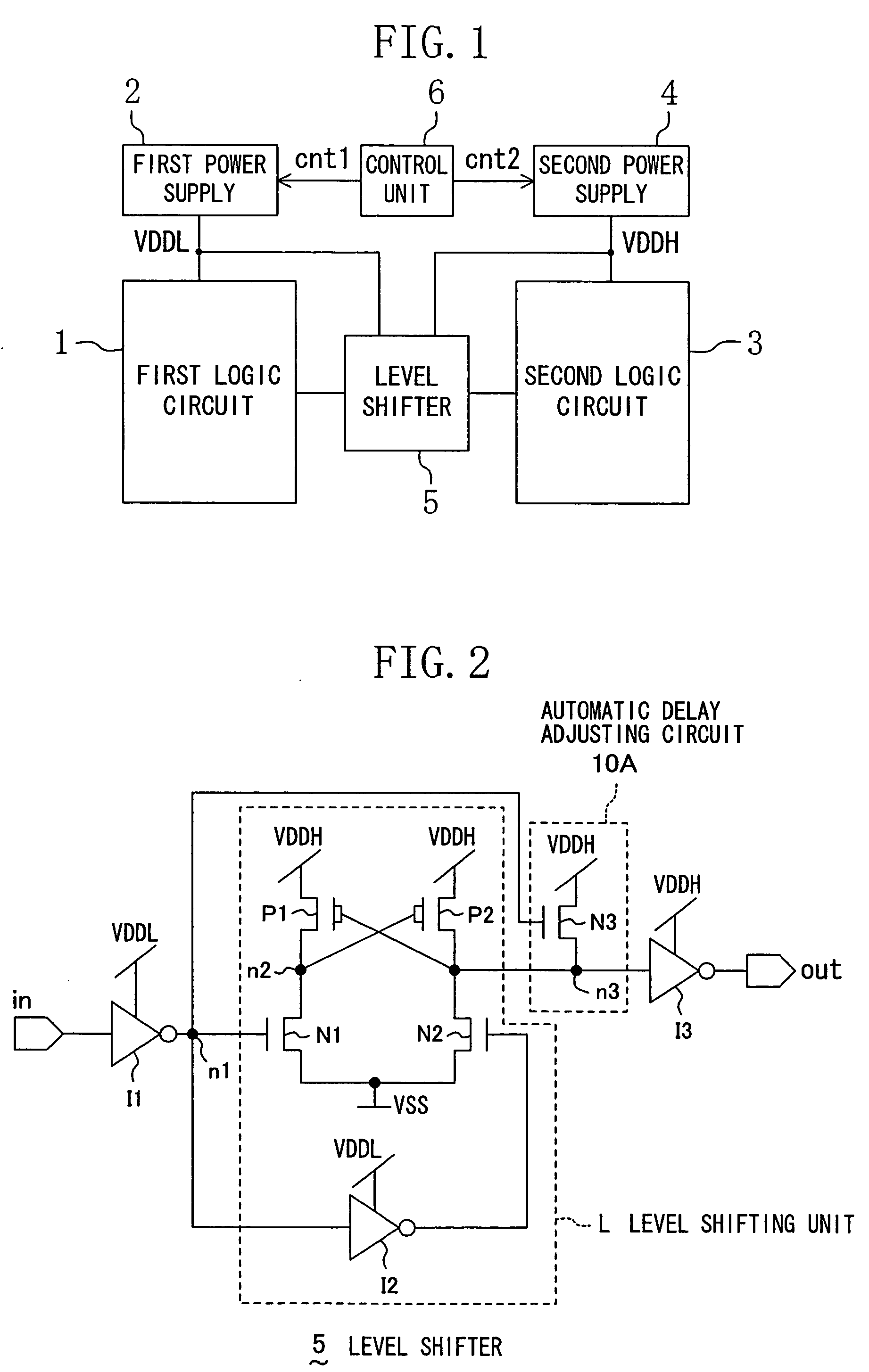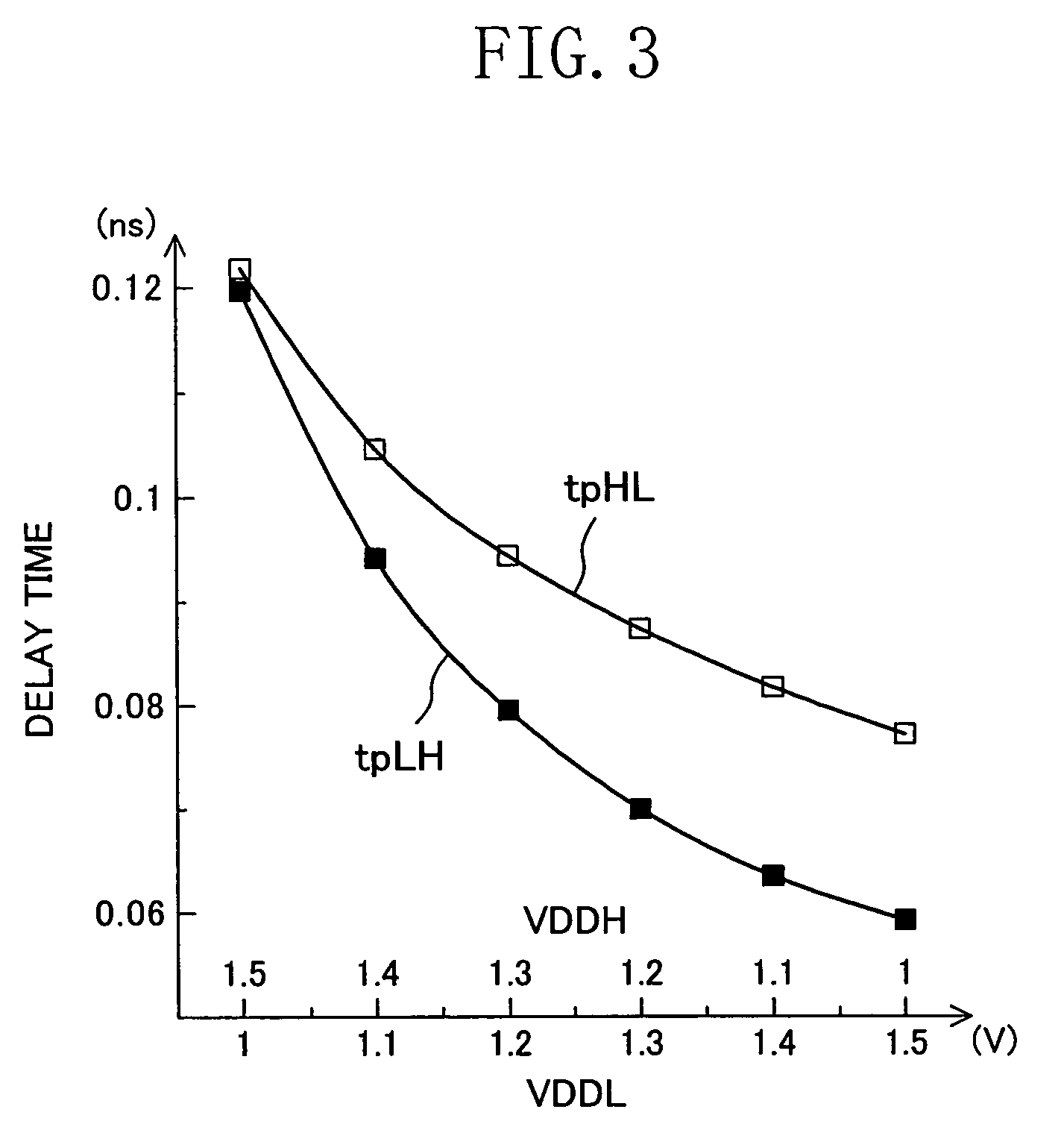Level shifter having automatic delay adjusting function
a level shifter and automatic delay technology, applied in the field of level shifters, can solve the problems of disadvantageous imbalance of delay times, and achieve the effect of effective and reducing rise delay tim
- Summary
- Abstract
- Description
- Claims
- Application Information
AI Technical Summary
Benefits of technology
Problems solved by technology
Method used
Image
Examples
embodiment 1
[0047]FIG. 1 is a block diagram of a system using a level shifter having an automatic delay adjusting function according to Embodiment 1 of the invention.
[0048]In FIG. 1, a reference numeral 1 denotes a first logic circuit, a reference numeral 2 denotes a first power supply for supplying a first power voltage VDDL, a reference numeral 3 denotes a second logic circuit, a reference numeral 4 denotes a second power supply for supplying a second power voltage VDDH, a reference numeral 5 denotes a level shifter having an automatic delay adjusting function disposed between the first logic circuit 1 and the second logic circuit 3, and a reference numeral 6 denotes a control unit for changing the first and second power voltages VDDL and VDDH of the first and second power supplies 2 and 4.
[0049]The first power voltage VDDL is supplied to the first logic circuit 1 by the first power supply 2, and the second power voltage VDDH is supplied to the second logic circuit 3 by the second power suppl...
embodiment 2
[0065]A level shifter having an automatic delay adjusting function according to Embodiment 2 of the invention will now be described with reference to the accompanying drawings.
[0066]FIG. 4 is a circuit diagram of the level shifter having the automatic delay adjusting function of this embodiment. The level shifter of FIG. 4 has a basic configuration substantially the same as that of the level shifter of FIG. 2 but is different in an automatic delay adjusting circuit 10B including a P-type MOS transistor P3 in addition to the N-type MOS transistor N3.
[0067]In the automatic delay adjusting circuit 10B, the source of the N-type MOS transistor N3 is connected to the output terminal out and the gate thereof is connected to the input node n1 of the level shifting unit L. Furthermore, in the P-type MOS transistor P3, the drain thereof is connected to the drain of the N-type MOS transistor N3, the first power voltage VDDL is supplied to the source thereof and the second power voltage VDDH is...
embodiment 3
[0072]A level shifter having an automatic delay adjusting function according to Embodiment 3 of the invention will now be described with reference to the accompanying drawing.
[0073]FIG. 6 is a circuit diagram of the level shifter having the automatic delay adjusting function of this embodiment. The level shifter of FIG. 6 includes a current mirror circuit 15 as an automatic delay adjusting circuit 10C.
[0074]The current mirror circuit 15 includes a first N-type MOS transistor N3 and first and second P-type MOS transistors P3 and P4. In the N-type MOS transistor N3, the ground voltage VSS is supplied to the source thereof, the drain thereof is connected to the gates of the first and second P-type MOS transistors P3 and P4 and the gate thereof is connected to the input node n1 of the level shifting unit L. Also, in the first P-type MOS transistor P3, the drain thereof is connected to the drain of the first N-type MOS transistor N3 and the second power voltage VDDH is supplied to the so...
PUM
 Login to View More
Login to View More Abstract
Description
Claims
Application Information
 Login to View More
Login to View More - R&D
- Intellectual Property
- Life Sciences
- Materials
- Tech Scout
- Unparalleled Data Quality
- Higher Quality Content
- 60% Fewer Hallucinations
Browse by: Latest US Patents, China's latest patents, Technical Efficacy Thesaurus, Application Domain, Technology Topic, Popular Technical Reports.
© 2025 PatSnap. All rights reserved.Legal|Privacy policy|Modern Slavery Act Transparency Statement|Sitemap|About US| Contact US: help@patsnap.com



